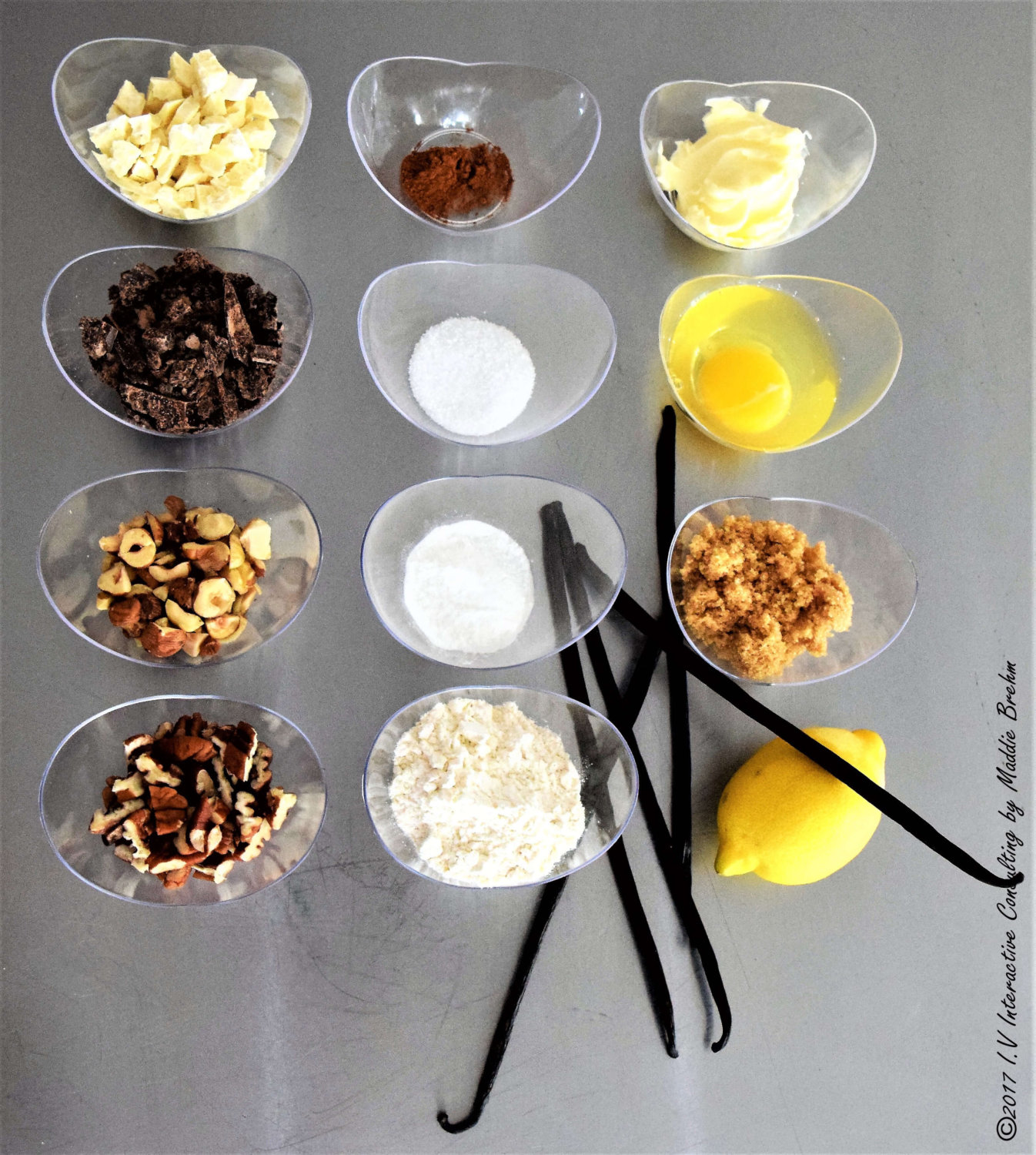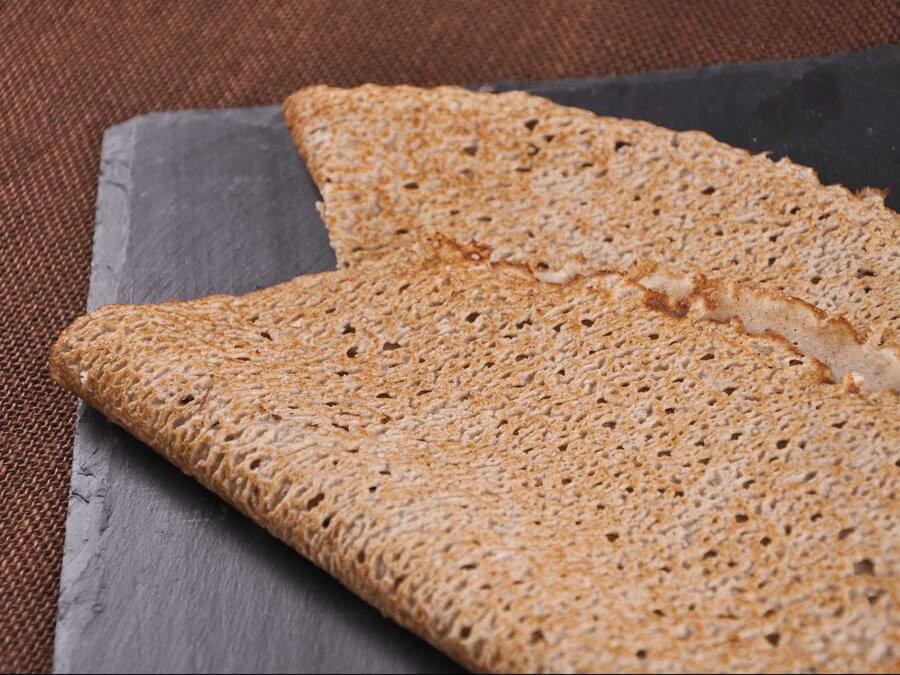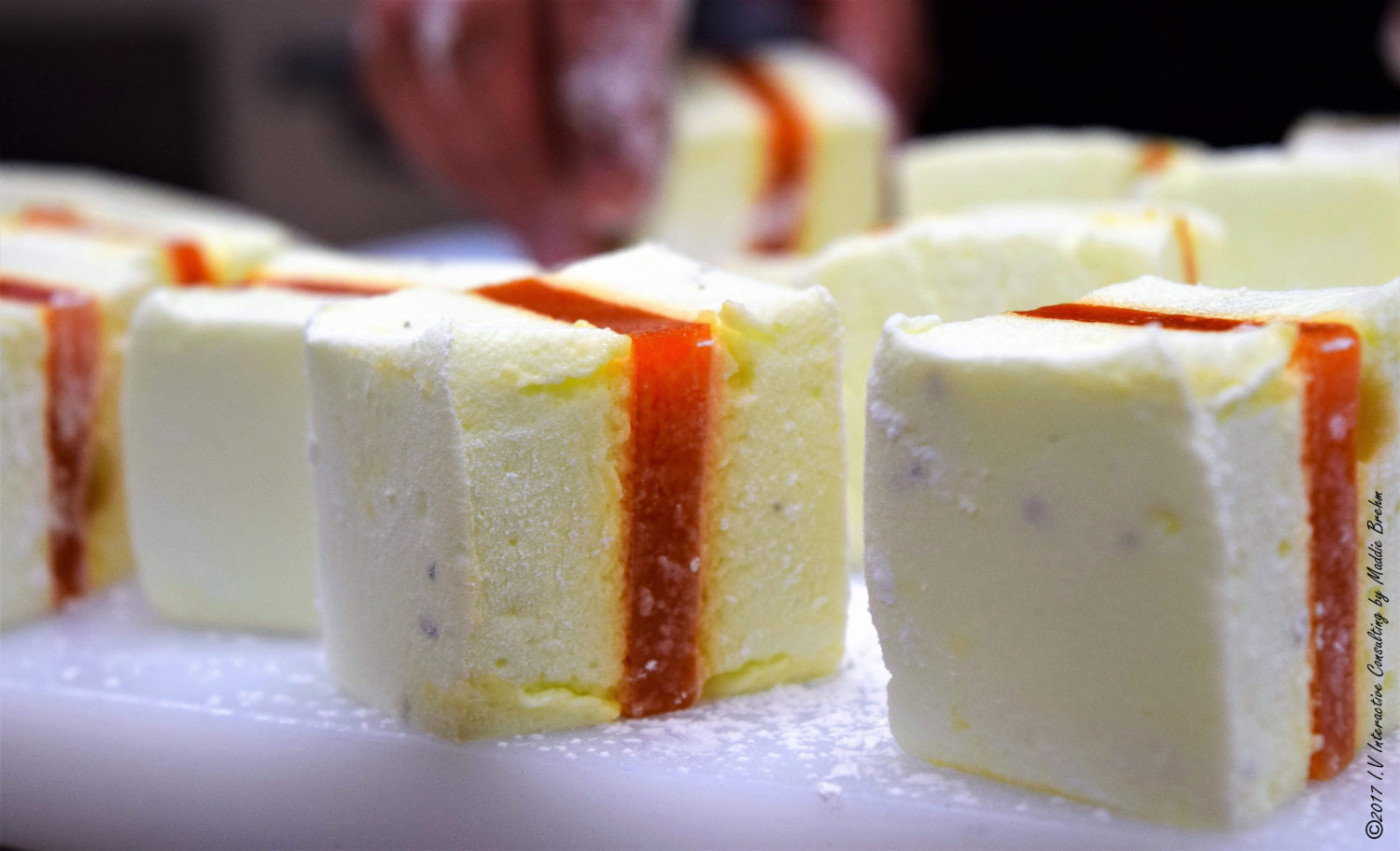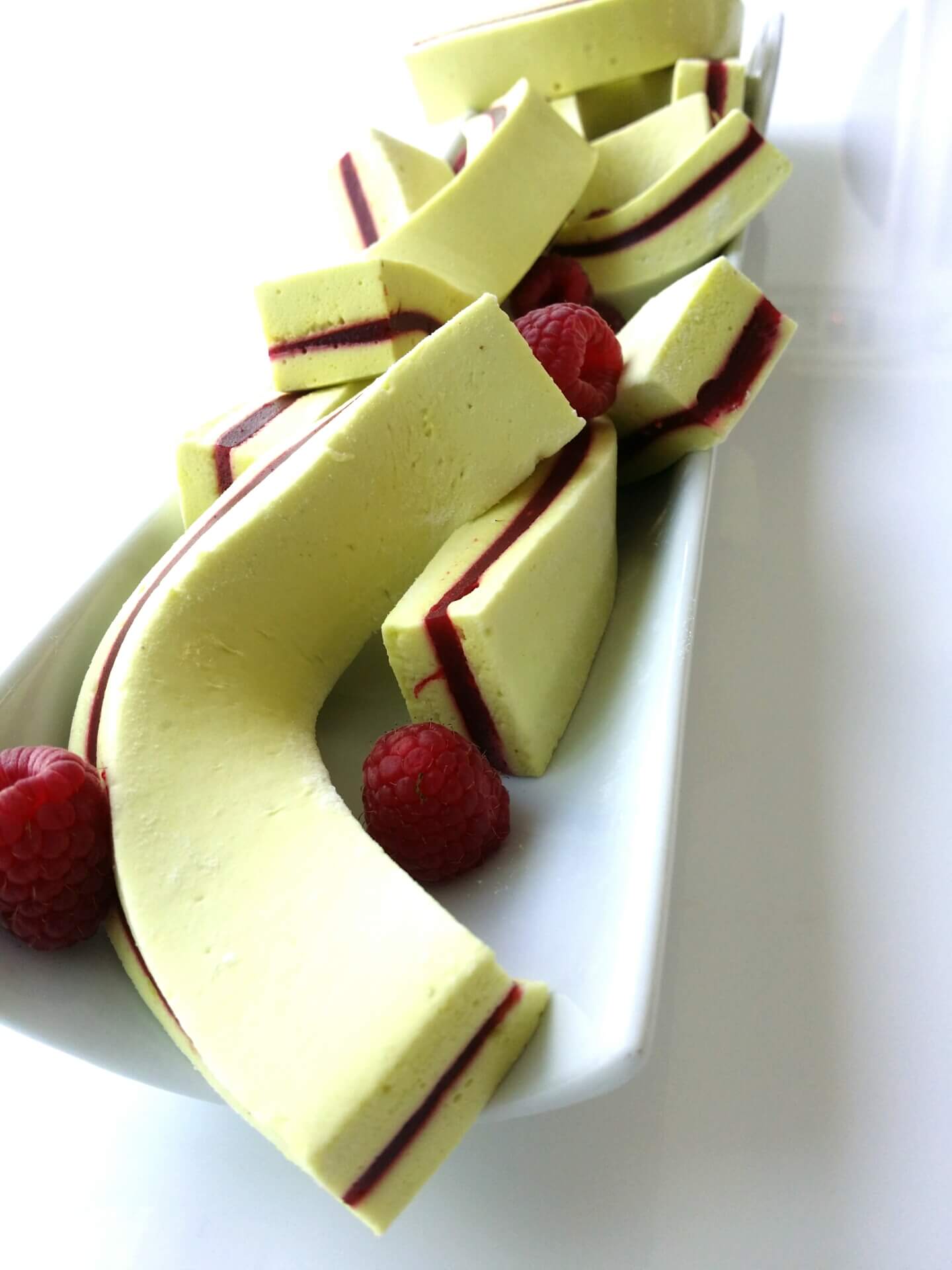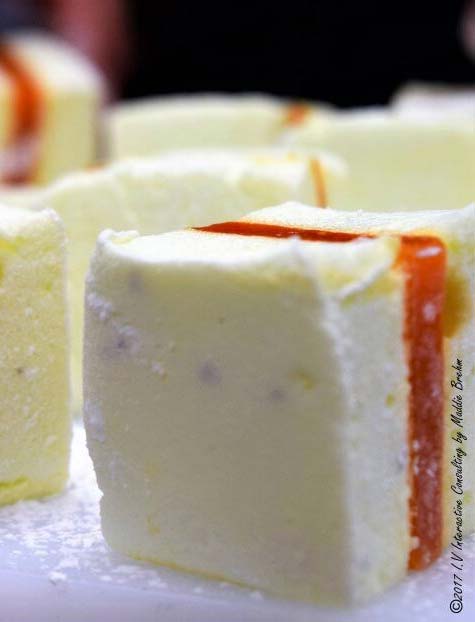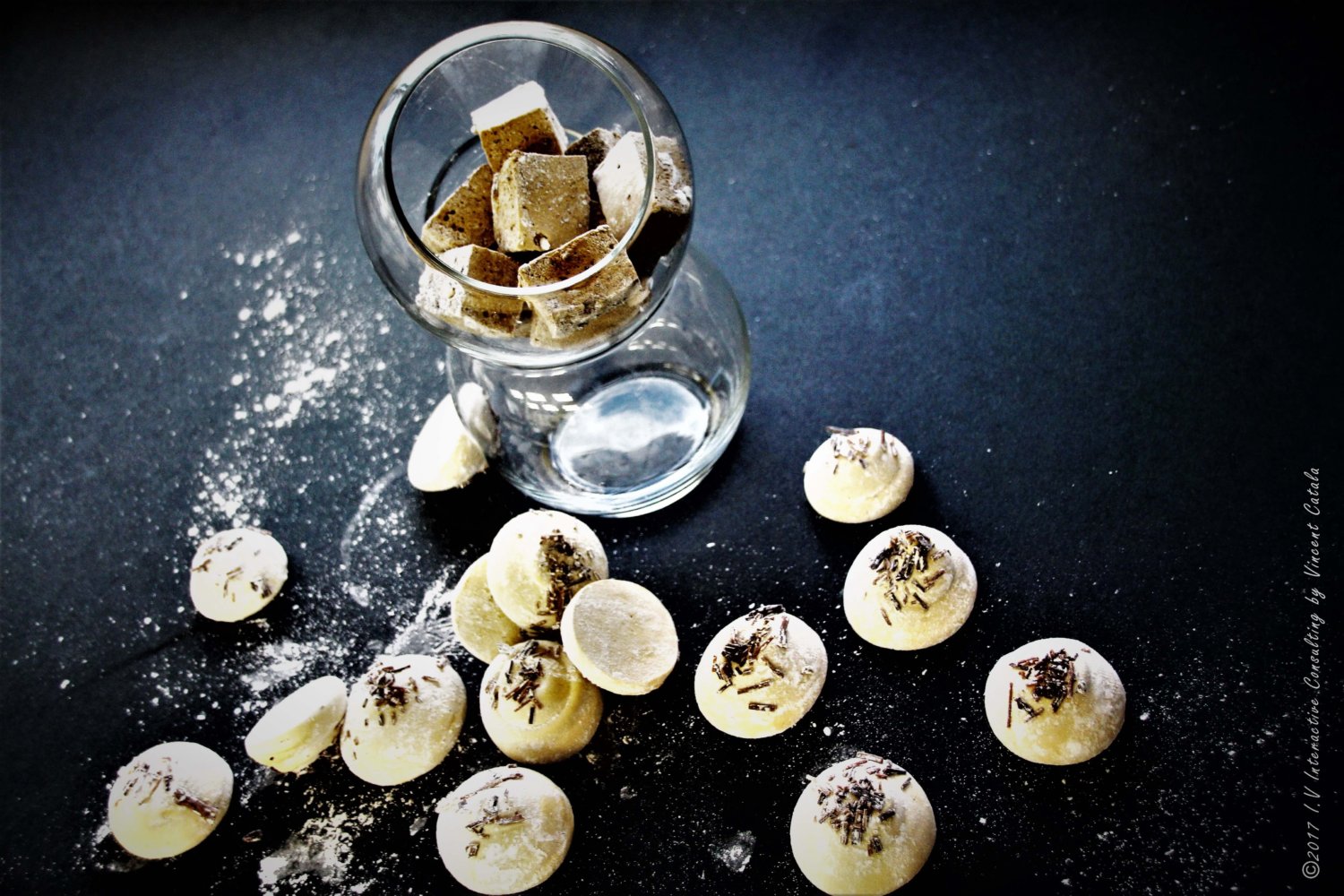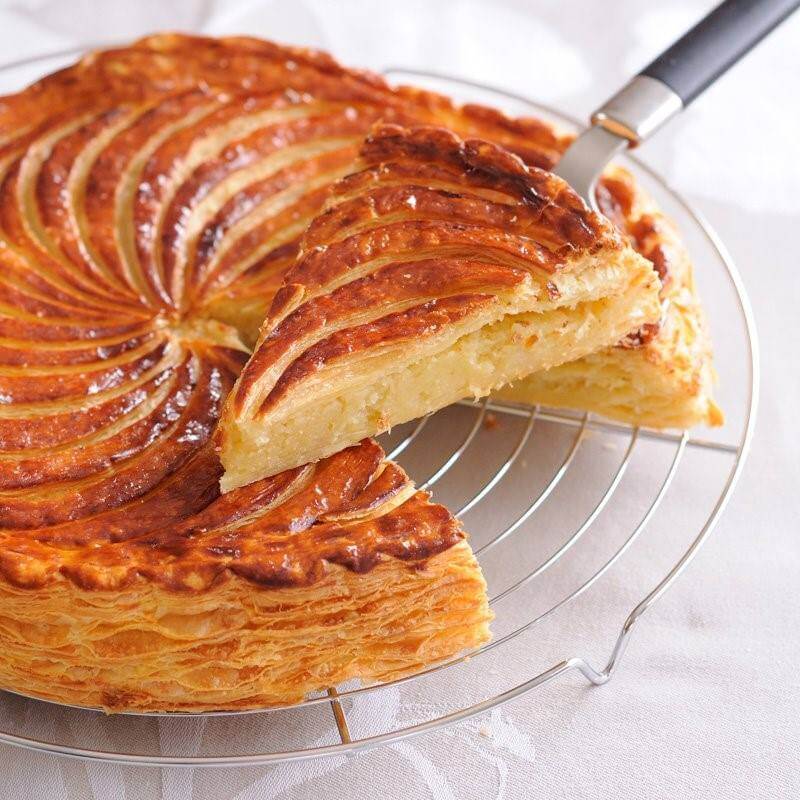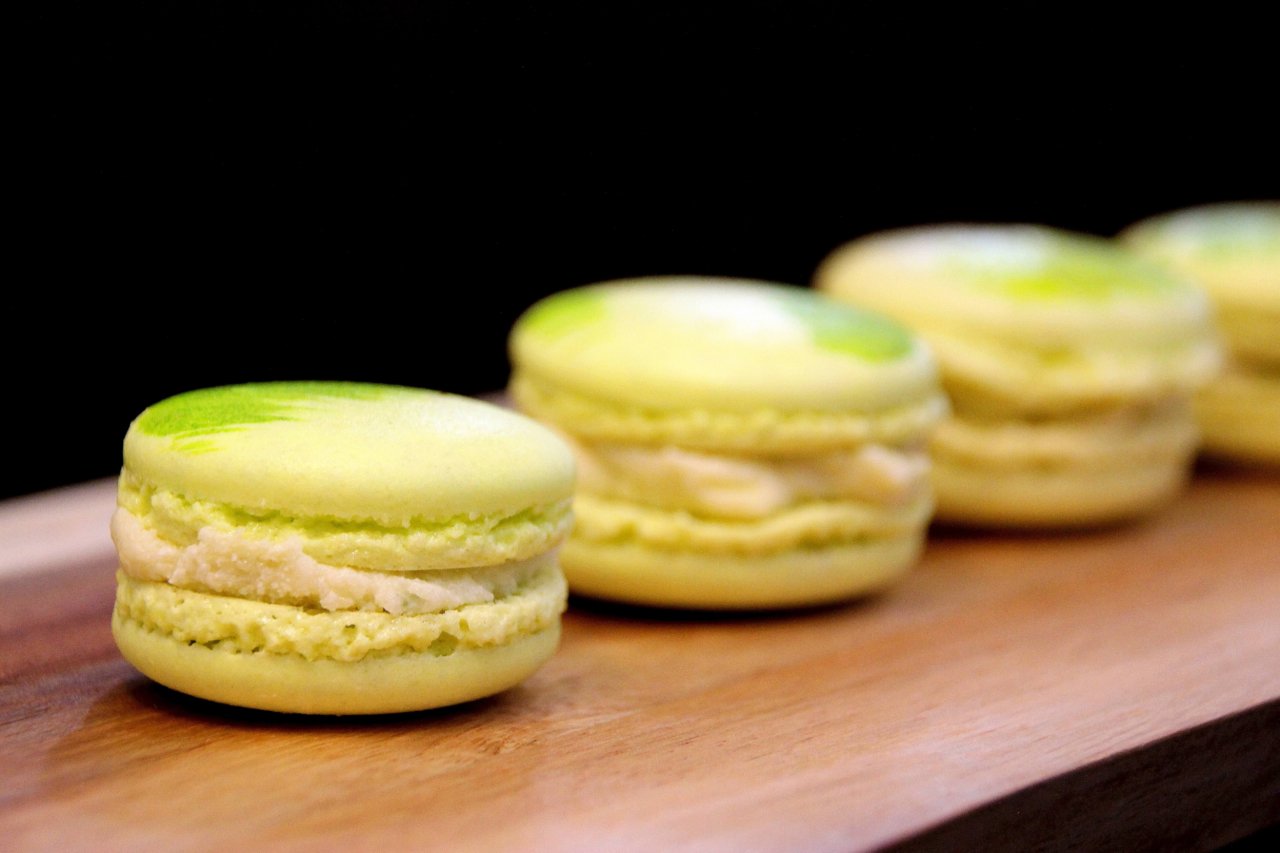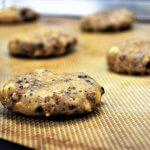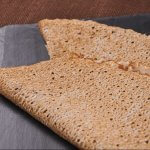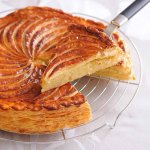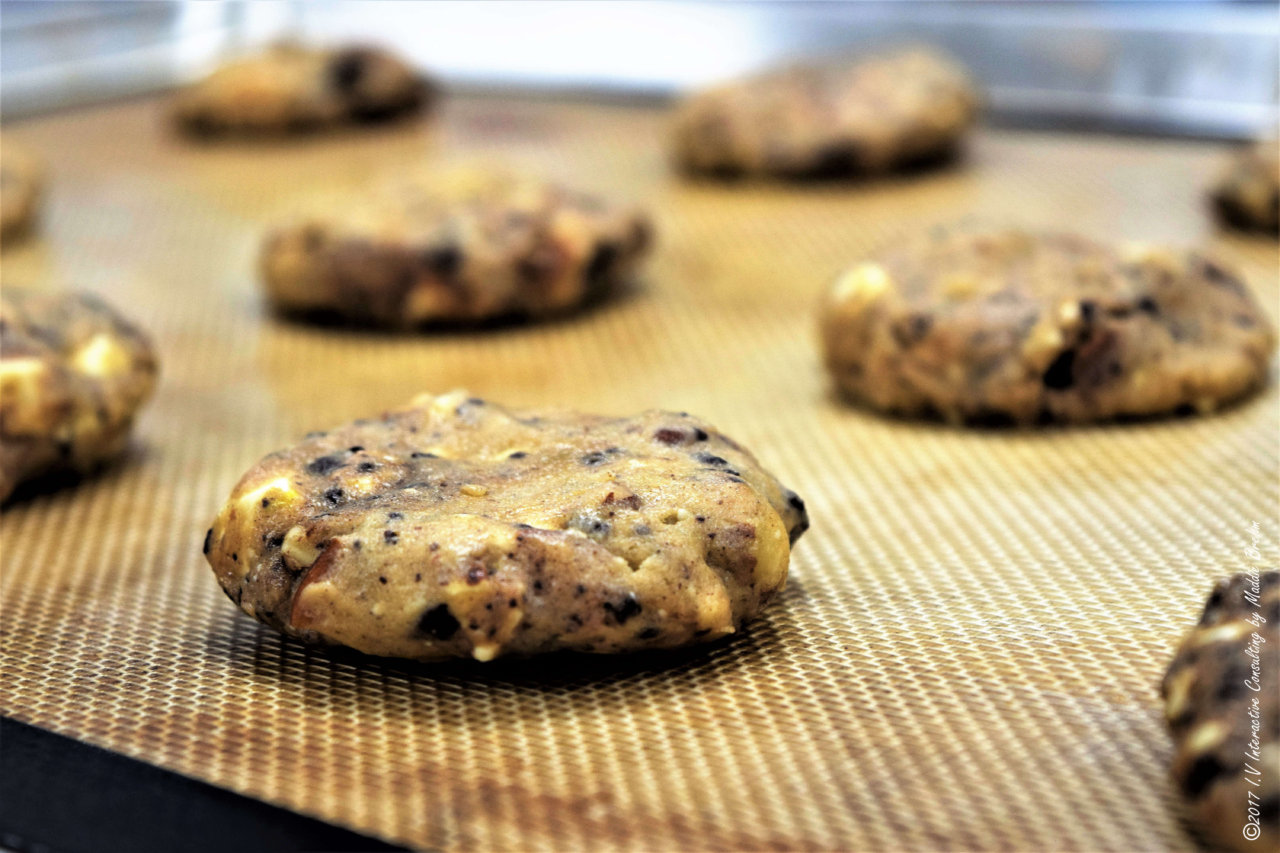
Soft and Crispy Cookies
The recipe for my chocolate cookies is quick and easy to make. The cookie dough freezes very well.
The advantage of this recipe is that the cookie dough holds together well. You will have the same result (shape and size) before baking and after baking. So no surprise!
This recipe comes from Delaware. It was given to me by the back of his correspondent. I put in the CM2. She is more than 120 years old. It’s THE cookie recipe that I use mostly car it and the more value to me.
The English word “cookie” comes from the Dutch word “koekje” (little cookie), introduced in the United States by the Dutch settlers of New Amsterdam. It is a generic term used in North America to refer to all kinds of dry cookies. In other English speaking countries they use the word “biscuit.”
In French, the word “cookie” generally refers to a specific type of round chocolate chip cookie, or sometimes to other similar cookies.
History of the cookie:
In the 1930’s, Kenneth and Ruth Wakefield bought an old toll station called The Toll House Inn. They made it into an actual inn. It was located in the Boston area, midway between Boston and New Bedford, on the outskirts of Whitman, Massachusetts.
Ruth prepared delicious meals, based on traditional colonial recipes. Her incredible desserts attracted many customers from all over New England.
One day while she was preparing a batch of butter cookies, she added a chocolate bar (semi-sweet from Nestlé) broken into small pieces, thinking they would mix with the dough.
To her surprise, the chocolate kept its shape and had a delicate and creamy texture. It had immediate success with the customers. A Boston newspaper published the recipe. Soon Nestlé chocolate bar sales skyrocketed. Nestlé and Ruth entered into an agreement authorizing the publication of the recipe for the “Toll House Cookies” on the packaging of their bars. The agreement also stipulated that Nestlé would supply all the chocolate that Ruth would need for her cookies, until the end of her days. She died in 1977. The Toll House Inn was sold in 1960 and burned in 1984.
World War II, and the mingling of all the soldiers from different states of the United States, spread this recipe from New England around the world as these cookies were a delicious source of energy and kept very well.
Soft and Crispy Cookies
For 20 cookies
Ingrédients:
- 180 gr softened butter
- 210 gr brown sugar
- 255 gr flour
- 7 gr baking powder
- 2*100 gr dried fruits (macadamia nuts, hazelnuts, almonds …)
- 2* 200 gr chocolate (dark, white, milk)
- 1 pinch of cinnamon
- 1 gr fine salt
- 1 lemon zest
Directions:
- Blanch the sugar with the butter
- Stir in salt, cinnamon, baking powder and lemon zest
- Add the flour
- Add the chocolate and the dried fruits
- Let the batter rest overnight in the refrigerator
- Form the dough into 3-4 cm balls
- Bake for 12 min at 195 ° C

